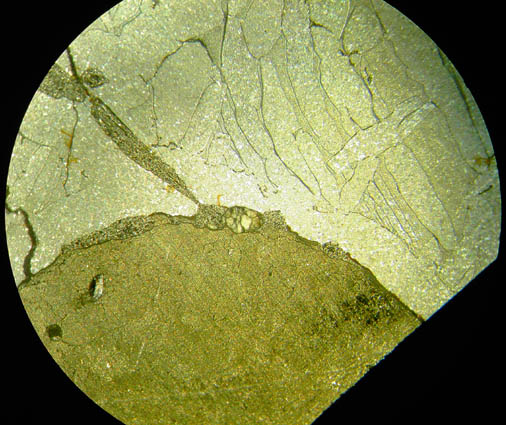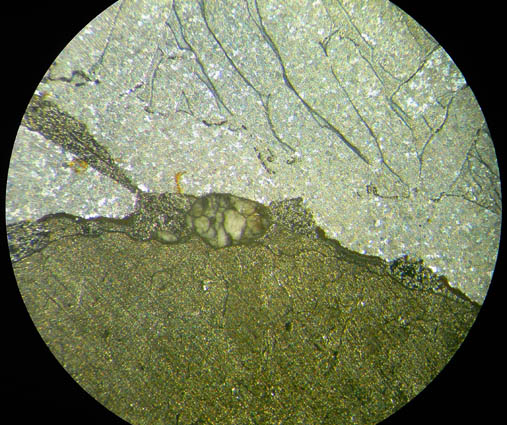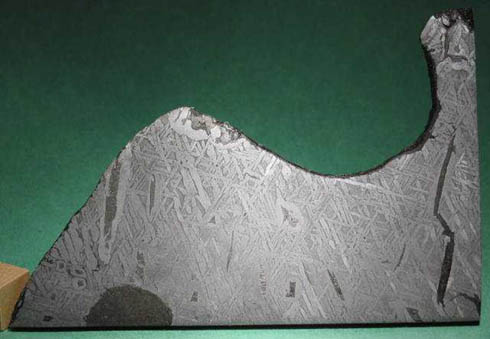


- Meteorites For Sale - Found A Meteorite? - Monthly Favourite - Meteorite Information - Classification List - Meteorite Collection - Media Centre - Home - Search - Site Map - Contact |
|
Tambo Quemado (IIIAB) - 80.60g Slice with Unusual Inclusion Below are photos and comments from Bernd Pauli on a meteorite known as Tambo Quemado. Discovered in this slice is a very unusual inclusion which can be seen in the photos below. Bernd posted this description in an email to the Meteorite Central Mailing List which describes it very well. This specimen is part of the Bernd Pauli Collection. Bernd Pauli:
"Tambo Quemado, a member of the IIIAB irons that must have been
artificially reheated to about 1000°C at some point of its
history and the result: fused schreibersite crystals and
transformed kamacite grains are clearly visible under a
microscope. The troilite nodule has a whopping diameter of 17
millimetres, has a mottled appearance and is surrounded by a
seam of schreibersite.
It is a "stony", maybe a silicate-related inclusion at the upper
edge of the troilite nodule. Wondering what I was looking at, I
searched for information both in O. Richard Norton's
Encyclopedia, in Buchwald, and in McSween. On page 205 of
"Meteorites and Their Parent Planets", Mc Sween says that
"silicates in IIIAB irons are similar in composition to HED
chondrites". Note: These images are high quality and may take a couple of minutes to load.
Magnified Image Details:
Tambo Quemado, (Photo 1)
Back to 'The Unusual Meteorites Features Page' menu...
|


